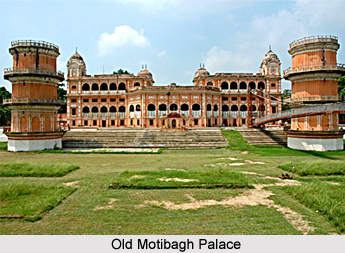 Patiala is one of the former generous cities of the state of Punjab. It is a large city and is famous for its traditional Punjabi `salwar` and footwear, turban and last but not the least popular monuments. The ruling Sikh families of Patiala, Jind and Nabha, are called `the Phulkian houses`, because they trace their origins from Phul, an agrarian leader, who founded a small village in Nabha in the middle of 17th century. Ala Singh was the grandson of Phul and it was he who founded local supremacy over the Bhattis and other rivals. He also constructed the fort at Patiala, but it was later crushed by the invading Afghan forces at the Battle of the Barnala in the year 1762. The appointed Raja by the Afghans seized the first opportunity to revolt and sacked Sirhind after killing its Afghan governor. By the year 1765, the foundations of the state were established. However, it suffered at the hands of the famous European freebooter George Thomas; it survived to be consolidated under Ranjit Singh, who entered into treaty arrangements with the British in the year 1809. In the Nepal War of 1815 and again in between 1845-1846 and during the Mutiny, the Maharaja remained loyal to the British and offered valuable support, a policy which continued through the two world wars.
Patiala is one of the former generous cities of the state of Punjab. It is a large city and is famous for its traditional Punjabi `salwar` and footwear, turban and last but not the least popular monuments. The ruling Sikh families of Patiala, Jind and Nabha, are called `the Phulkian houses`, because they trace their origins from Phul, an agrarian leader, who founded a small village in Nabha in the middle of 17th century. Ala Singh was the grandson of Phul and it was he who founded local supremacy over the Bhattis and other rivals. He also constructed the fort at Patiala, but it was later crushed by the invading Afghan forces at the Battle of the Barnala in the year 1762. The appointed Raja by the Afghans seized the first opportunity to revolt and sacked Sirhind after killing its Afghan governor. By the year 1765, the foundations of the state were established. However, it suffered at the hands of the famous European freebooter George Thomas; it survived to be consolidated under Ranjit Singh, who entered into treaty arrangements with the British in the year 1809. In the Nepal War of 1815 and again in between 1845-1846 and during the Mutiny, the Maharaja remained loyal to the British and offered valuable support, a policy which continued through the two world wars.
There are numerous interesting buildings in Patiala, which has a clean, well-maintained appearance and beautiful gardens. The Old Motibagh Palace of late 19th century is one of the largest residencies in Asia. It is a vast rambling building situated in the middle of manicured lawns and tree-lined scenes. The central block is edged by enormously long wings, which seem to last for ever but are actually symmetrical around the central axis. Architecturally, it is a miscellaneous Victorian mixture of Rajput and Mughal styles, all in rose-pink sandstone, a spectacular setting for a maharaja whose lavish lifestyle and reputation for self-indulgent eccentricity enlivened the social scene in the early 20th century. The Durbar Hall has over 100 chandeliers. There are fifteen dining-rooms and a vast central saloon that was once furnished with English chairs and sofas and signed portraits of European dignitaries. It has been converted into a museum now and the adjacent new Motibagh Palace has now become NIS, Patiala or National Institute for Sports, Patiala. The New Motibagh Palace was built in 1959 and by comparison, it is a more modest affair, with a plain arcaded facade crowned by a plain cupola. It accommodates many of the furnishings and family mementos from the Old Palace.
Moreover, there are a number of outbuildings that include the Sheesh Mahal or Hall of Mirrors, for senior ladies of the family, and the Baradari, a smaller white marble pleasure pavilion in a walled Mughal garden. Other sites of interest in Patiala comprise the King Edward Memorial Hospital, the Clinical Research Laboratory, the Fort Museum and the Temple of Mahakali and Rajeswari.
Patiala with its historical monuments is aptly regarded as the city of rich tradition and royal heritage of northern India.



















